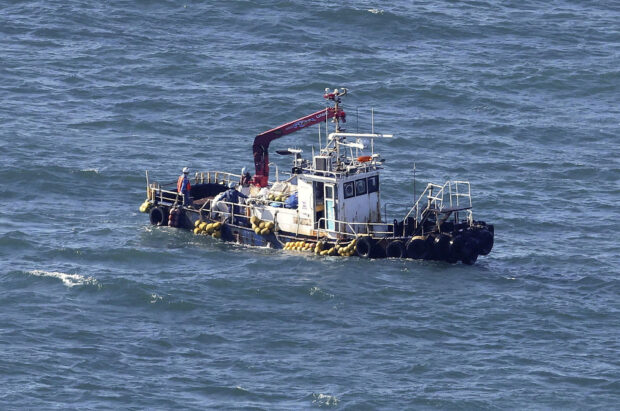
FILE PHOTO: A boat collecting seawater for monitoring radioactive materials in the sea is seen near the Fukushima Daiichi Nuclear Power Plant, after the nuclear power plant started releasing treated radioactive water into the Pacific Ocean, in Okuma, Fukushima prefecture, Japan August 24, 2023, in this photo taken by Kyodo. Mandatory credit Kyodo/via REUTERS
TOKYO — Japan’s environment ministry on Sunday said tests of seawater near the Fukushima nuclear power plant did not detect any radioactivity, days after the discharge of treated water that had been used to cool nuclear reactors.
The east-Asian nation on Thursday started releasing water from the wrecked Fukushima plant into the Pacific Ocean, sparking protests within Japan and neighboring countries and prompting China to ban aquatic product imports from Japan.
The environment ministry’s tests of samples taken from 11 points near the plant concluded concentrations of radioactive isotope tritium below the lower limit of detection – 7 to 8 becquerels of tritium per liter. It said the seawater “would have no adverse impact on human health and the environment”.
The ministry will publish test results weekly at least for the next three months and will then review the timing of further disclosure, an official told Reuters on Sunday.
Japan’s fisheries agency on Saturday said tests of fish in waters around the plant did not detect tritium.
Plant operator Tokyo Electric Power Co (Tepco) on Friday said seawater near the plant contained less than 10 becquerels of tritium per liter, below its self-imposed limit of 700 becquerels and far below the World Health Organization’s limit of 10,000 becquerels for drinking water.
Tepco on Sunday said it had not detected any significant change.
RELATED STORIES